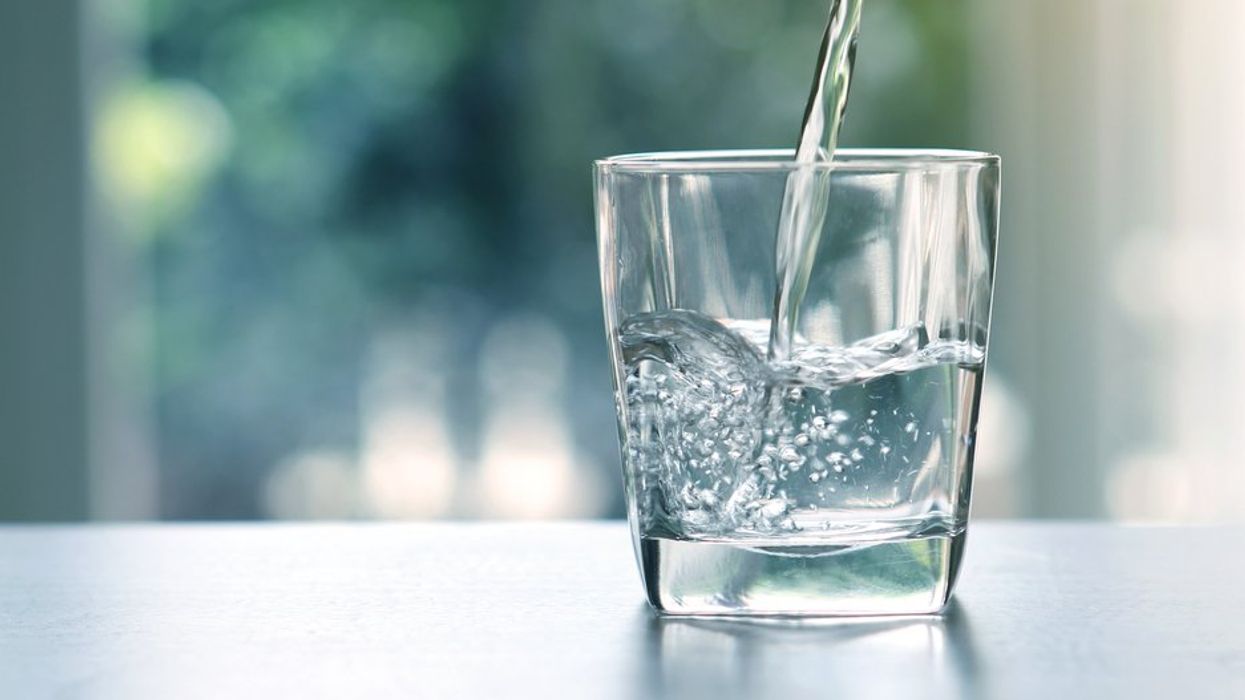Editor's note: Scott Faber is senior vice president of government affairs at the Environmental Working Group (EWG), which is a nonprofit environmental health research and advocacy group. He is also an adjunct professor at Georgetown University Law Center. The views expressed here are his own. Read more opinion on CNN.
(CNN) — President Joe Biden pledged to make the toxic "forever chemicals," also known as per- and polyfluorinated substances, or PFAS, a priority during his campaign. When the Environmental Protection Agency (EPA) released a proposed drinking water standard for six PFAS compounds last week, he delivered on his promise.
As EPA Administrator Michael Regan said while announcing the new standard, "communities across this country have suffered far too long from the ever-present threat of PFAS pollution."
For decades, millions of Americans have been drinking these toxic chemicals, which are used in everything from cookware to clothes to firefighting foam. PFAS are a family of more than 12,000 chemicals that repel water and oil and are used on waterproof and grease resistant coatings. Because of their strong carbon-fluorine bond, PFAS don't break down in the environment, and build up and stay in the human body for many years causing long-term damage, hence the name "forever" chemicals.
Exactly how many Americans have been drinking unsafe levels of these chemicals is hard to know, because our drinking water utilities were only recently required to test for their presence. But, according to research estimates, it's likely that more than 200 million Americans have been drinking a chemical linked to an increased risk of cancer, reproductive harm, immune system damage and other serious health problems, even at low levels.
Until last week, water utilities were not required to test PFAS, much less filter them out of our drinking water. Thanks to Biden, the US is about to take the first step toward change.
Water utilities will soon have to meet the toughest drinking water standards, of 4 parts per trillion, or ppt, for two of the most notorious and best-studied PFAS compounds: PFOA, formerly used to make DuPont's Teflon, and PFOS, formerly an ingredient in 3M's Scotchgard. The agency also set a separate standard for a witches brew of four other PFAS compounds: GenX, PFBS, PFNA and PFHxS. By doing so, the EPA will help protect millions of Americans from exposure to these toxic chemicals.
It should not have taken the EPA more than two decades to act.
The EPA has known about the risks posed by PFAS since the 1990s but consistently failed to put public health ahead of polluter profits. Other chemicals that pose many of the same risks still remain in our tap water — like hexavalent chromium, for instance — because changes made to our drinking water laws in the 1990s have left all of us unprotected. Many of the standards in place are badly out of date.
It will be no surprise that polluters, long accustomed to using our air and water as dumping grounds, will likely complain and seek to escape responsibility. They always do.
They did not wait to argue that the science is not strong enough or that protecting ordinary people from cancer and other harms is too costly. In fact, many of the companies which are already fighting Biden's win for consumers have, for decades, hid just how dangerous PFAS are from their workers and neighbors.
Many of these polluters are still making the PFAS problem even bigger. Experts estimate that more than 30,000 companies could be using PFAS and dumping their PFAS wastes into rivers, landfills and sewers, or pumping them into the air.
These drinking water standards for PFAS are historic, but the Biden administration has more work to do.
While it's good news that the EPA is directing water utilities to take PFAS out of the drinking water delivered to our homes, it has delayed efforts to stop polluters, including chemical companies that make PFAS, from discharging PFAS into our drinking water supplies. In other words, polluters can keep putting PFAS into our drinking water supplies while water utilities are taking them out.
Making matters worse, Biden's Food and Drug Administration (FDA), similar to previous administrations, continues to defend the use of PFAS in food packaging, relying on outdated studies and ignoring new evidence that these chemicals are toxic at extremely low levels. The FDA has known PFAS were toxic since the 1960s and knows that they migrate from packaging into our food. Indeed, the FDA is aware that people are more likely exposed to toxic PFAS from our food than our drinking water.
FDA Commissioner Robert Califf recently told veteran food reporter Helena Bottemiller Evich that we need to address food chemical safety "for all humankind" and has made food chemical safety reviews a big focus of his proposed reorganization of the FDA's food program, and rightly so. But, so far, many PFAS are still considered "safe" for use in food packaging, at least according to the FDA's career staff.
States have not waited for the EPA and FDA to act, setting their own PFAS drinking water standards and banning PFAS from everyday items, including food packaging, kids' products and cosmetics. But the drinking water standards proposed this week by the EPA will ensure that all of us, not just folks lucky enough to live in Michigan or New Jersey, will have safe water when they turn on the tap.
The-CNN-Wire
™ & © 2023 Cable News Network, Inc., a Warner Bros. Discovery Company. All rights reserved.


















































